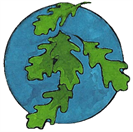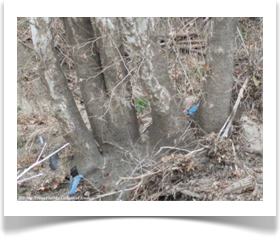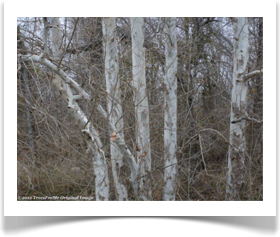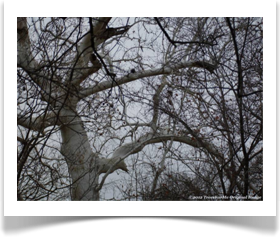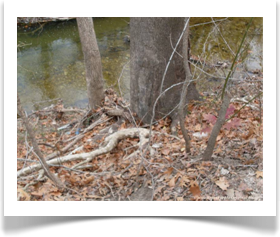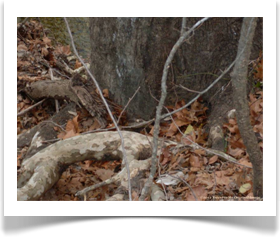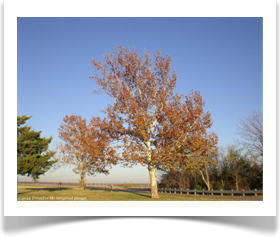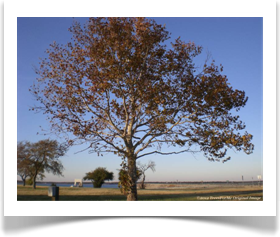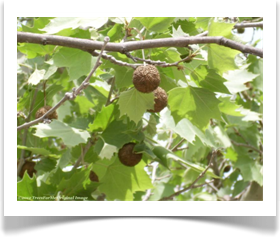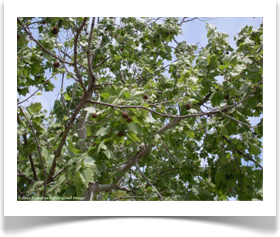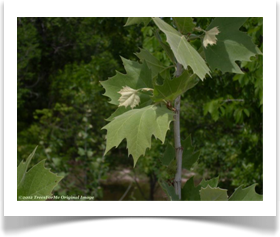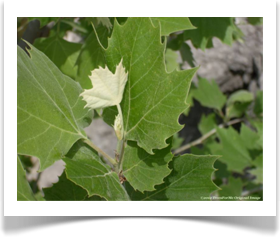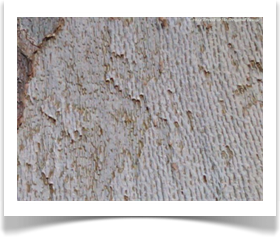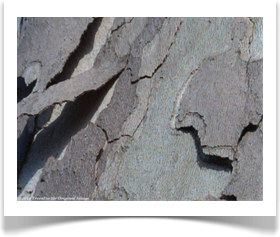
Custom Search
Platanus occidentalis L., American Sycamore




™

Want to add your tree to our picture gallery? Click here for details!
Tree lists:
•A-Z by scientific
name
•A-Z by common
name
•By Family
For state A-Z list click state name below.
•A-Z by scientific
name
•A-Z by common
name
•By Family
For state A-Z list click state name below.
-Color denotes a tree that is rare or endangered


Image Gallery
American Sycamore, Platanus
occidentalis, has distinct peeling bark.
Oak Point Nature Preserve
Collin Co., Texas
©2012 TreesForMe Original Image.
See usage requirements.
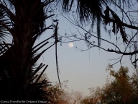
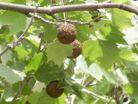
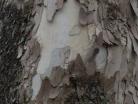
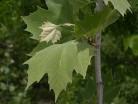
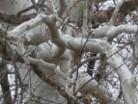
Platanus occidentalis>American Sycamore Image Gallery

When top killed, young Platanus occidentalis,
will sprout vigorously from stumps.
Oak Point Nature Preserve
Collin Co., Texas
©2012 TreesForMe Original Image.
See usage requirements.
Common to deciduous forests and deciduous
itself, the white bark of American sycamore is
easy to see through the leafless winter forest.
Collin Co., Texas
©2012 TreesForMe Original Image.
See usage requirements.
Exposed roots of Platanus occidentalis have
the same distinct bark of the upper trunk and
branches. .
Arbor Hills Nature Preserve
Collin Co., Texas
©2012 TreesForMe Original Image.
See usage requirements.
American Sycamore trunk bases, however,
are dark, rough and deeply furrowed.
Arbor Hills Nature Preserve
Collin Co., Texas
©2012 TreesForMe Original Image.
See usage requirements.
One of the tallest trees of the eastern North
America, American Sycamores may grow up to
120 feet when mature and live over 250 years.
Grayson Co., Texas
©2012 TreesForMe Original Image.
See usage requirements.
Platanus occidentalis turns reddish orange in
the fall before dropping its leaves over winter
and exposing its beautiful white branches.
Grayson Co., Texas
©2012 TreesForMe Original Image.
See usage requirements.
The fruits of Platanus occidentalis are woody
and compacted together forming hard heads,
or balls. They are similar in size to those of
Sweetgum trees but are smooth.
Tarrant Co., Texas
©2012 TreesForMe Original Image.
See usage requirements.
Summer foliage of American Sycamore is
dense and makes this tree species good for
use in areas where shading is desired. It is
prone to ice damage and should not hang
over any structures.
Tarrant Co., Texas
©2012 TreesForMe Original Image.
See usage requirements.
New leaves of American Sycamore trees are
pale yellow and fuzzy like the underside of
mature leaves.
Tarrant Co., Texas
©2012 TreesForMe Original Image.
See usage requirements.
As they age, leaves of Platanus occidentalis
will darken on the topside to a yellowish
green, and will have a prominent vein pattern.
Tarrant Co., Texas
©2012 TreesForMe Original Image.
See usage requirements.
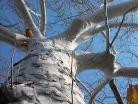
A close up look of the texture of American
Sycamore bark.
Tarrant Co., Texas
©2012 TreesForMe Original Image.
See usage requirements.
The bark of Platanus occidentalis is multi-
colored hues of ashy brown.
Tarrant Co., Texas
©2012 TreesForMe Original Image.
See usage requirements.
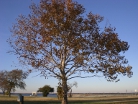
- Trees
- A-Z scientific
- A-Z by Common Name
- Families
- Aceraceae Maple Family
- Anacardiaceae Sumac Family
- Annonaceae Custard Apple Family
- Aquifoliaceae Holly Family
- Arecaceae, Palm Family
- Betulaceae Birch family
- Bignoniaceae Trumpet Creeper Family
- Burseraceae Frankincense Family
- Caprifoliaceae Honeysuckle Family
- Chrysobalanaceae Coco-plum Family
- Cornaceae Dogwood Family
- Cupressaceae Cypress Family
- Cyrillaceae Cyrilla Family
- Ebenaceae Ebony Family
- Ericaceae Heath Family
- Fabaceae Pea Family
- Fagaceae Beech Family
- Hamamelidaceae Witch Hazel Ffamily
- Hippocastanaceae Horse Chestnut Family
- Juglandaceae Walnut Family
- Lauraceae Laurel Family
- Leitneriaceae Corkwood Family
- Magnoliaceae Magnolia Family
- Meliaceae Mahogany Family
- Moraceae Mulberry Family
- Myricaceae Bayberry Family
- Myrsinaceae Myrsine Family
- Myrtaceae Myrtle Family
- Nyctaginaceae Four Oclock Family
- Olacaceae Olax Family
- Oleaceae Olive Family
- Pinaceae Pine Family
- Platanaceae Plane Tree Family
- Polygonaceae Buckwheat Family
- Rhamnaceae Buckthorn Family
- Rosaceae Rose Family
- Rubiaceae Madder Family
- Rutaceae Rue Family
- Salicaceae Willow Family
- Sapindaceae Soapberry Family
- Sapotaceae Sapodilla Family
- Simaroubaceae Quassia Family
- Styracaceae Storax Family
- Symplocaceae Sweetleaf Family
- Theaceae Tea Family
- Tiliaceae Lindon Family
- Ulmaceae Elm Family
- Taxaceae Yew Family
- Yucca Family
- Browse by State
- Rare or Endangered Species
- Trees_with_Special_Uses
- Tallest and Biggest
- Noxious Weeds
- Causes
- About Us
- Our Stores
